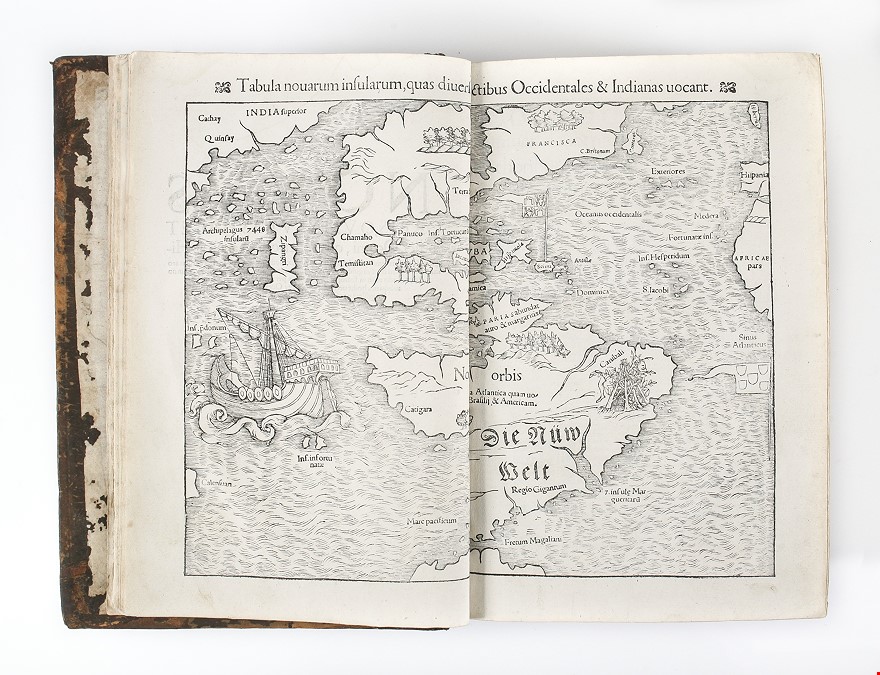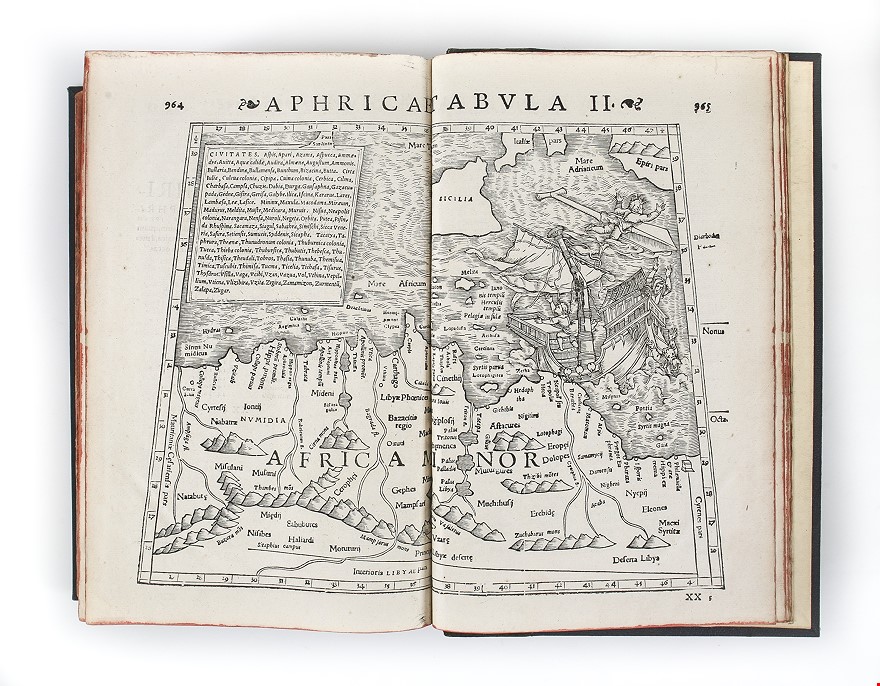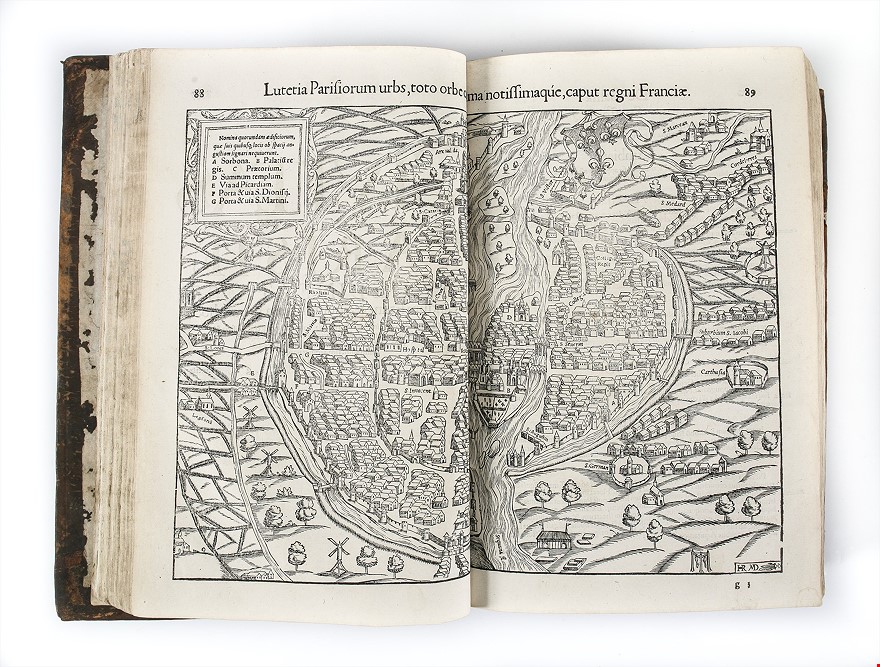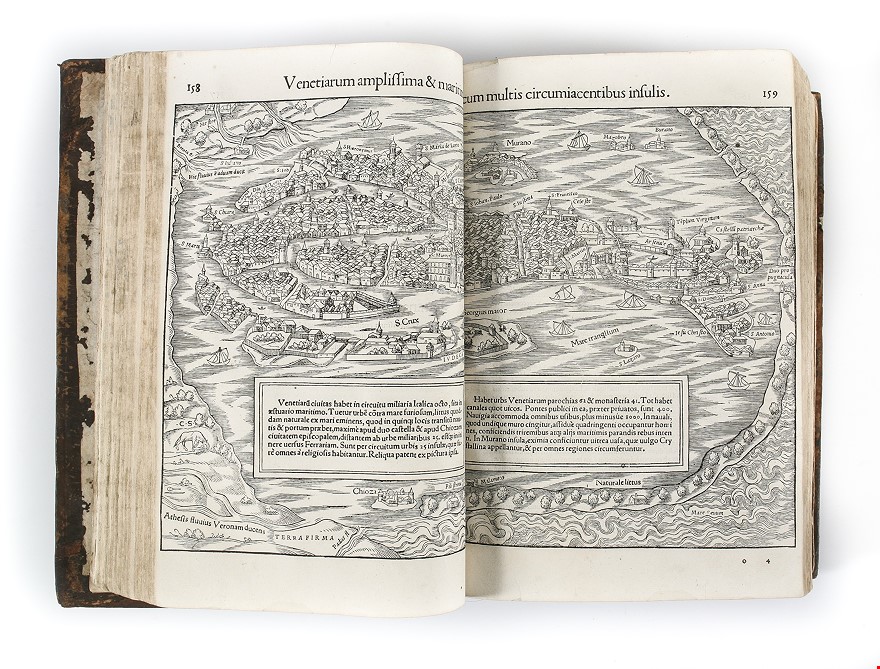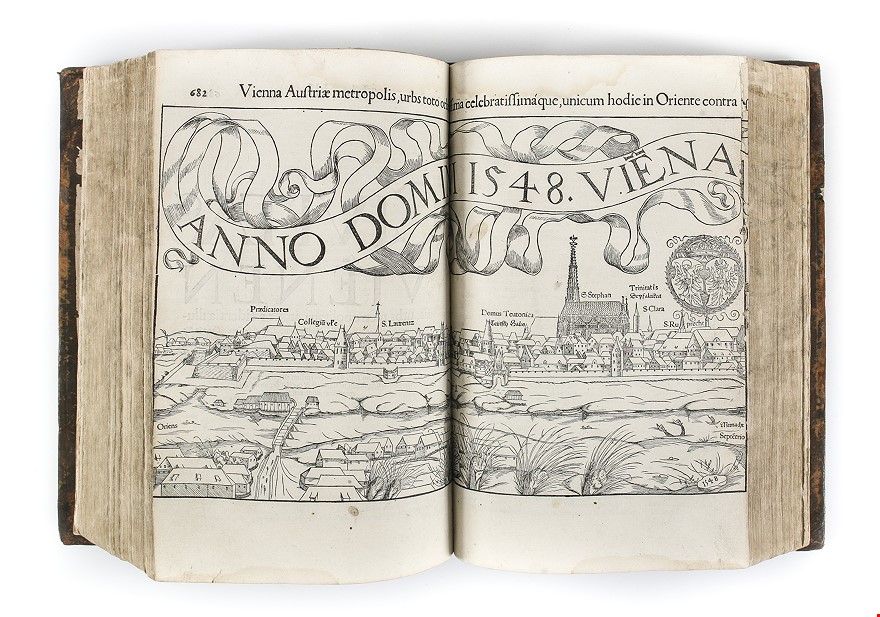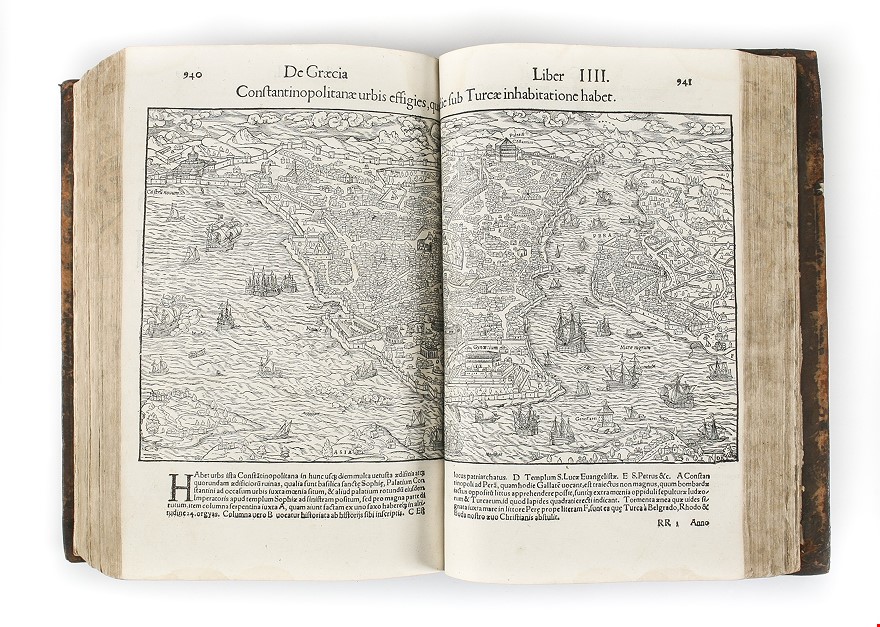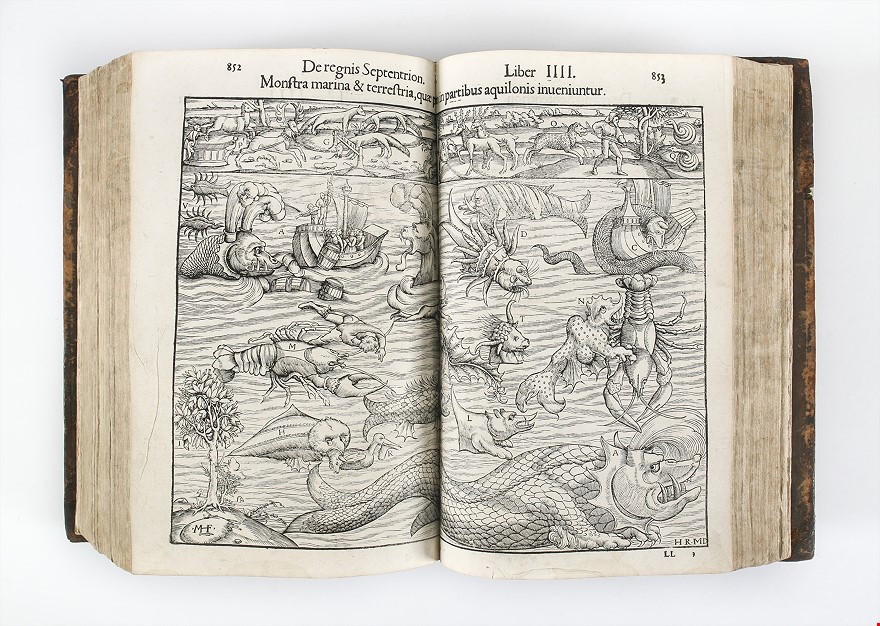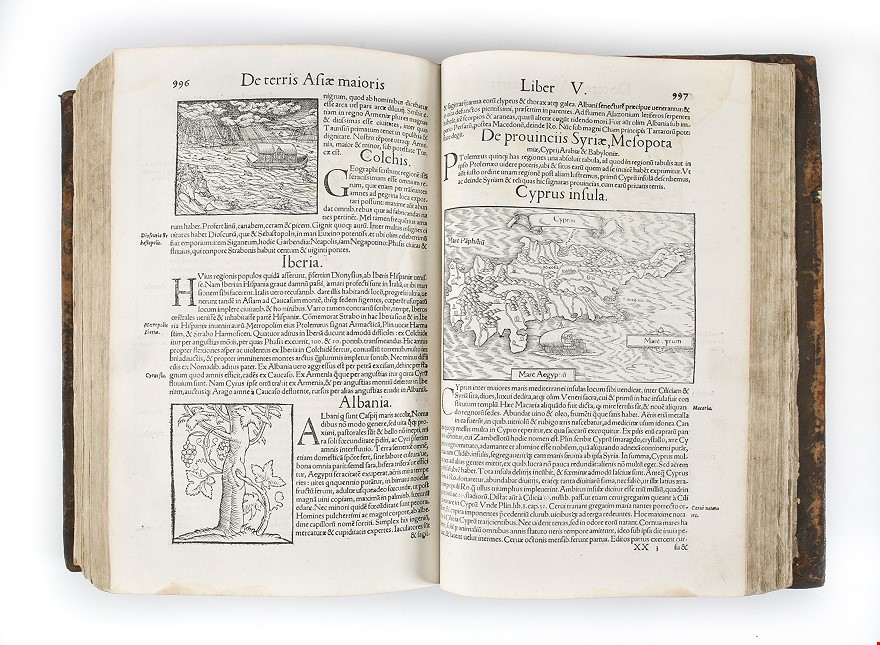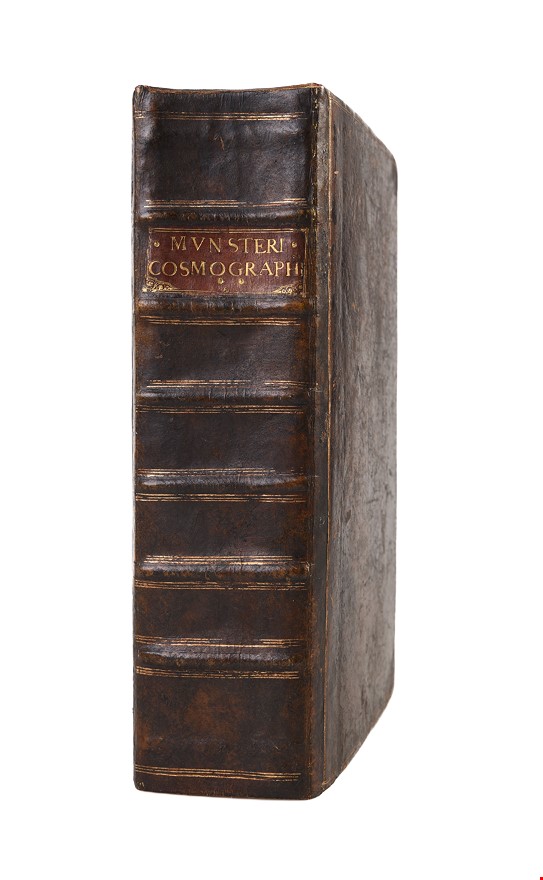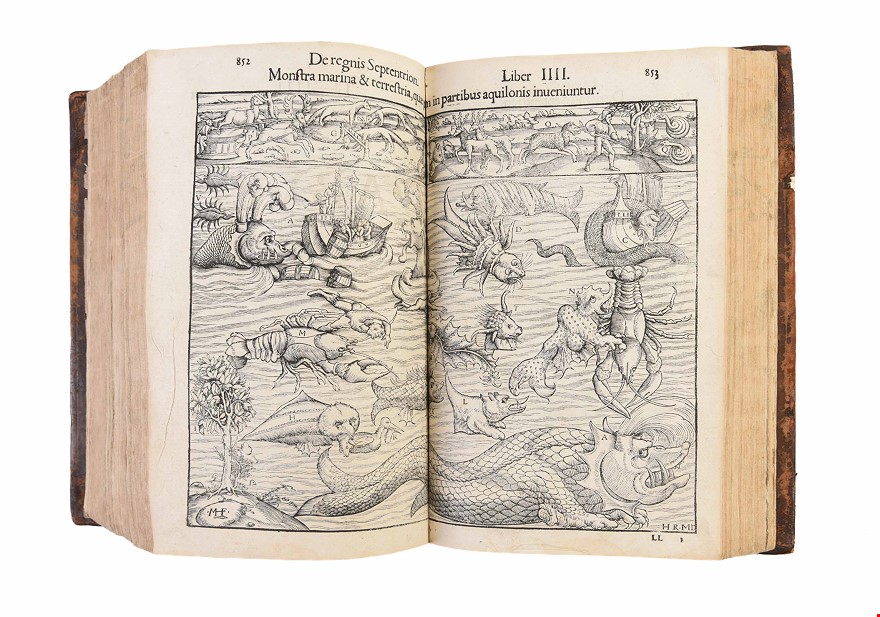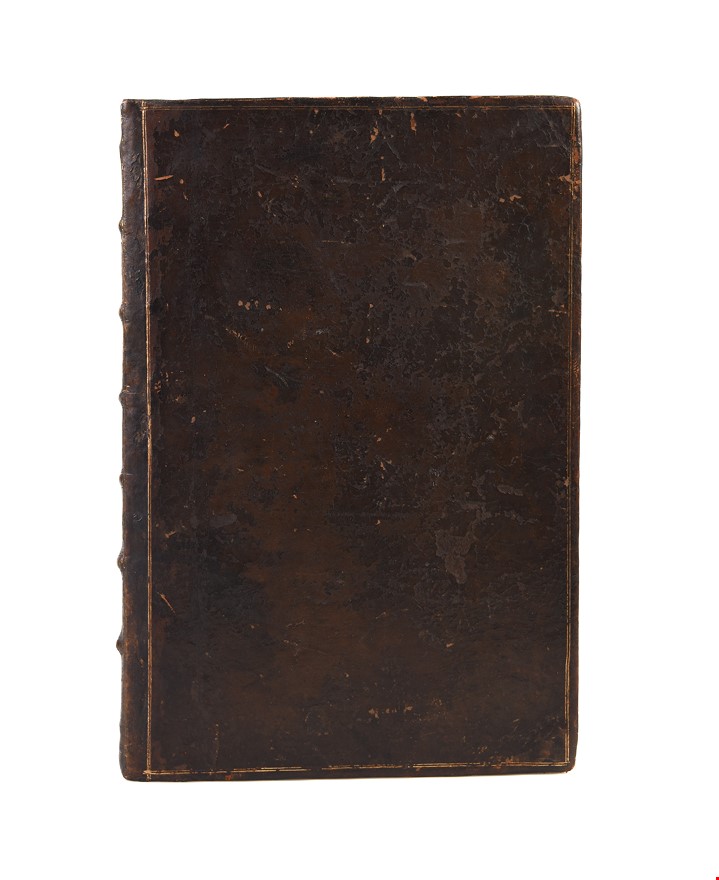Cosmographiae universalis Lib.VI. in quibus, iuxta certioris fidei scriptorum traditionem describuntur, omniu[m] habitabilis orbis partiu situs, p[ro]priæq[ue] dotes. Regionum topographicæ effigies. ...
MUNSTER Sebastian (1550.)
£27500.00
Please contact us in advance if you would like to view this book at our Curzon Street shop.
A FINE COPY
First Latin edition. Small folio (305 by 202 mm). Fourteen double-page woodcut maps, folding panoramas of Worms and Heidelberg (both backed), the panorama of Vienna lacking the right-hand sheet (though it is not called for in the pagination), 36 double-page town plans, views and prospects, double-page plate of monsters ("Munster's monsters"), many woodcut maps, plans and illustrations set in the text. 17th century calf, sensitively rebacked and repaired. Six raised bands, red morocco label and gilt titling to spine. Basel, Heinrich Petri,
Sebastian Münster (1488-1552) was the most important German geographer of his day; he studied Hebrew, Greek, mathematics and cosmography under Konrad Pelikan, and then mathematical geography and cartography with Johann Stöffler. From this latter period survives his Kollegienbook, a manuscript note-book containing forty-four maps, mostly derived from existing materials, but also containing a map of the Rhine drawn by Münster himself.
While he was involved in a number of cartographic and scientific publications, Münster is best known for two books, the Geographia, an edition of Claudius Ptolemy’s geographical text, first published in 1540, and the Cosmographia, a modern compendium describing both heaven and earth, first published in 1544, and extensively illustrated. Both publications were a great success, but the Cosmographia, proved the most enduring, appearing in editions up to 1628.
The Cosmographia was the first extensive account of the modern world in German, intertwining scholarly descriptions, popular history and other narratives as well as myths and legends. It is also one of the most heavily illustrated books of the period. It was first published in German, and reprinted in Latin, French, Italian and Czech editions, appearing in multiple editions, which contributed greatly to its wide distribution, its considerable influence on contemporaries and its undoubted commercial success.
The Cosmographia underwent a significant revision and enlargement in 1550; this copy is the first Latin text edition of this expanded version.
It is one of the landmarks of scholarship in the sixteenth century revival of contemporary geographical studies in which Münster, through his many publications, was such a central figure.
Stock Code: 223357
